Ernie Johnson: The Steadiest Voice In Sports

The Round Mound of Bluster stepped off the Inside the NBA set, where he had been sniping Russell Westbrook for dominating the ball, and settled into an oversized lounge chair to boom his scathing review of the movie Logan as a pair of sisters prepared his manicure, pedicure and eyebrow waxing. If there was anything Charles Barkley was born to do, perhaps even more than score and rebound, it was to launch into humorous diatribes at the drop of a hat. As the eyebrow work commenced, Barkley started calling himself “Chuck Delicious” and took a good-natured swipe at one of his favorite foils: “Shaq is just an asshole. I just work with him because they pay me.” The pampering treatment, a birthday gift from Kenny Smith, had him in an especially boisterous mood. With his suit pant legs rolled up so his feet could soak, Barkley launched into a passionate argument about how the public—including NBA players like LeBron James—“only want you to be honest when you agree with them.”
Yet one subject stymied Barkley’s pugilistic tendencies, continually producing a compliment rather than a punchline. “When someone dies, everyone says great things at their funeral and most of the time it’s bullshit,” Barkley said, as his smiling face turned serious. “You don’t have to make up nice stuff about Ernie.” A few minutes later, another rant withered halfway through. “You know how some religious people are annoying and a pain in the ass? They beat you in the head with the Bible all the time?” Barkley asked rhetorically. ”Ernie has his religion but he doesn’t bug you with it.”
Barkley is fearless, stubborn and bulletproof, capable of saying virtually anything, no matter how politically incorrect, without repercussions. Most importantly, he knows it. The Hall of Famer delights in denunciation and often takes aim at the NBA and TNT’s own programming, which only makes his soft spot even more glaring. Who is this Ernie, and how has he so thoroughly captivated basketball’s loudest critic?
Ernie Johnson Jr. was born to be a sports broadcaster in much the same way that Stephen Curry was born to hoop. Ernie Sr. was a Major League Baseball player turned broadcaster, giving his son a head start on multiple fronts. As a child, Ernie Jr. tagged along to the ballpark and on the speaking circuit, learning how to prepare game notes, interact with players, work a room and manage egos. While his own baseball career petered out at the University of Georgia, his father’s stiff-lipped diamond maxims have stuck with him. “If somebody spikes you at second base, you never rub,” Johnson said, while sitting at his office desk in Atlanta last month, repeating his father’s words three times to underscore how much he prizes quiet dignity.
Just as Curry earned his stripes as a small-school standout, Johnson had to climb the ladder to reach his perch at Turner Sports, where he anchors NBA, NCAA tournament, MLB postseason, and golf coverage and has won multiple Sports Emmys. Forget about pedicures for his fellow commentators, he didn’t even have fellow commentators when he started out as a one-man band for WMAZ in Macon, GA. “I’d be reporting on a triple ax murder in middle Georgia,” he chuckled, “and then we would go to commercial and there I am wearing a flannel shirt walking down the aisles of W Supply. We didn’t have the budget to do journalism like it was taught in journalism school.”
Watch: Ernie Johnson gives heartfelt speech at Craig Sager’s memorial
As time passed, television producers realized that Johnson had a wide skillset: an affable delivery, an understated wit, a commitment to doing his homework, and a versatility to cover multiple sports. Despite his do-everything experience in Macon and a perfectionistic streak that once led him to berate a colleague for mistiming his show, Johnson fundamentally didn’t want to be the center of attention. His father, whom Johnson still calls his “best friend” more than five years after his death, was a palm ball-lofting relief pitcher, not a heat-throwing ace. “I would goad Ernie Sr. at Christmas parties and ask about guys I knew were a pain in the ass,” said Turner Sports VP of production Tim Kiely, who has worked on Inside for more than 20 years. “He never said a bad word. A veteran. That was all passed on to Ernie Jr. They’re mirrors: No ego and very inclusive.”
Kiely understood that some of Johnson’s abilities were being squandered in a traditional postgame highlight show and, in a moment that has entered Turner lore, he hatched a plan in the mid-1990s to take his host’s career and the show in a new direction. His vision was simple but radical: He wanted Johnson to reduce his dependency on the teleprompter to generate a looser, more conversational feel. While Johnson would be asked to break with years of tradition and drop some of television’s formality, the new approach would theoretically showcase his ability to build rapport, direct his fellow commentators to areas of expertise and create authentic on-air disagreements.
At first, Johnson resisted. Believing that the teleprompter is like a harmful “drug” for hosts, Kiely decided to cut off Johnson cold turkey during a live broadcast. Johnson improvised his way through the show but felt exposed, even though Kiely believed his experiment had been successful. The two men argued immediately after the show, with Johnson storming into a bathroom and shattering a coffee mug against the wall in a rare moment of rage. As an ice-breaker, Kiely went to the mall and purchased a replacement mug that bore a classified ad reading Postal Worker Wanted. “I don’t know if it was the Going Postal coffee mug or the fact that he saw he was being challenged to grow,” Kiely said. “But he bought in.”
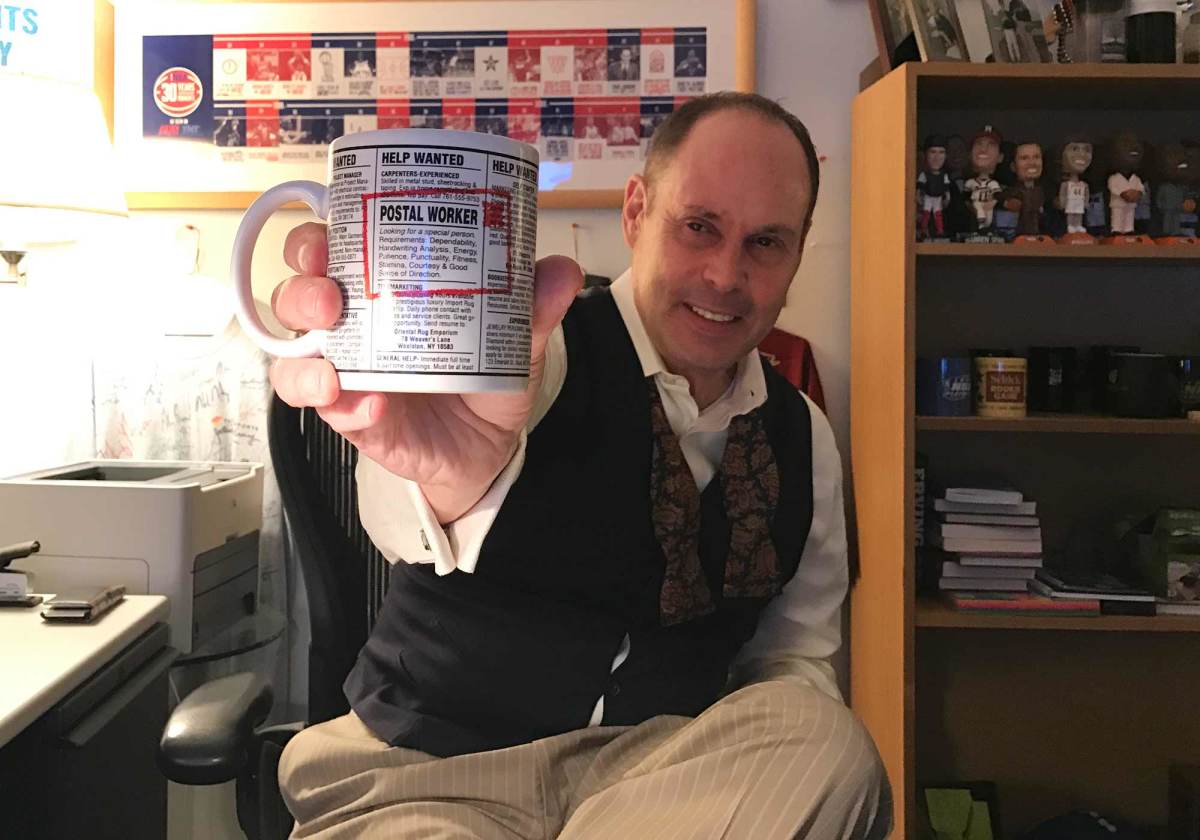
This was the “A-Ha” moment, the sports television equivalent of giving Curry the green light to start pulling up from 30 feet. To Smith, unleashing Johnson from the teleprompter allowed him to become TNT’s version of boxing trainer Angelo Dundee, carefully managing his prizefighters as he guided them through their nightly bouts. To Barkley, Johnson became an “orchestra conductor” with two key attributes: a willingness to cede the spotlight and a knack for navigating controversial subjects.
To Shaquille O’Neal, Johnson is the Julius Erving of the studio with an “elegant” style that has helped the Hall of Fame center find his footing on television. “When I started, I wanted to be Bryant Gumbel,” O’Neal said. “I was doing too much to be ‘professional’ and it didn’t look right or feel right. Everyone knows that’s not me. Now we just have conversations and do stuff to make people laugh.” To Kiely, who was nicknamed “Jellybean” as a child because of his weight, Johnson was now overseeing the type of “ball-breaking” that the average viewer can relate to and the type of razzing that takes place in NBA locker rooms.
Kevin Durant Responds To Shaq’s Criticism: There’s More To Life Than Rings
The mailman mug still sits on a memorabilia-packed shelf in Johnson’s office, not far from Warren Spahn and Vin Scully bobbleheads, a humbling reminder of the twin perils of self-doubt and self-importance. “There was a time I worshipped at the altar of Rudy Martzke,” Johnson said, referring to the longtime USA Today television critic. “I worried that he would give me a Dreaded Glitch award all the time. That’s the wrong way to approach it. At times, I was a little full of myself too. That wasn’t the way my dad taught me and I had to change. I used to let my job define who I was. I like this version of me now, the one that values his job but doesn’t put it at the top of the heap.”
How Johnson values his job is evident in his game preparation routine. Every night during the NBA regular season, when his wife Cheryl and children are in bed, Johnson begins crunching box scores. Every single one of them.
He starts by scouring every game in search of specific statistical achievements: 30-point scorers, double-digit rebounders and 13+ assisters make his cut. Johnson transfers these into a comprehensive three-ring binder, which is divided into sections for individual and team accomplishments. In the binder, which accompanies him on set, Johnson painstakingly tracks minutia like winning streaks, overtime results, the highest-scoring individual performances of the season, pace-adjusted offensive and defensive rankings, head-to-head results between teams, and triple-doubles. “On a lot of these, Westbrook is the only guy I can fit on the page,” Johnson laughed.
The binder’s text is written in shorthand that requires a Rosetta Stone course to translate back to English, even for someone fully fluent in Basketball-Reference.com esoterica. With a flip of the page, Johnson can tell the viewer, or Barkley if he veers into the land of Alternative Facts, which team has this season’s longest winning streak, how many games it’s been since Westbrook’s most recent triple-double, how many more double-digit rebounding efforts DeAndre Jordan has than Tristan Thompson, and why Golden State’s defense is one of the league’s best even though they give up more points per game than 10 teams.
As show time approaches, Johnson pares down his work into a few pages of game notes. On one sheet for a March game between the Thunder and Spurs, Johnson can quickly access: the name of the Spurs’ owner; Kawhi Leonard’s per-game stats; all pertinent injuries for both rosters; the length of the Spurs’ winning streak; Taj Gibson’s numbers since a midseason trade to the Thunder; both teams’ upcoming opponents; the Spurs’ major offseason additions and subtractions; and much more. The sheets are then marked up by highlighters—he used four different colors for one game—to designate noteworthy information.
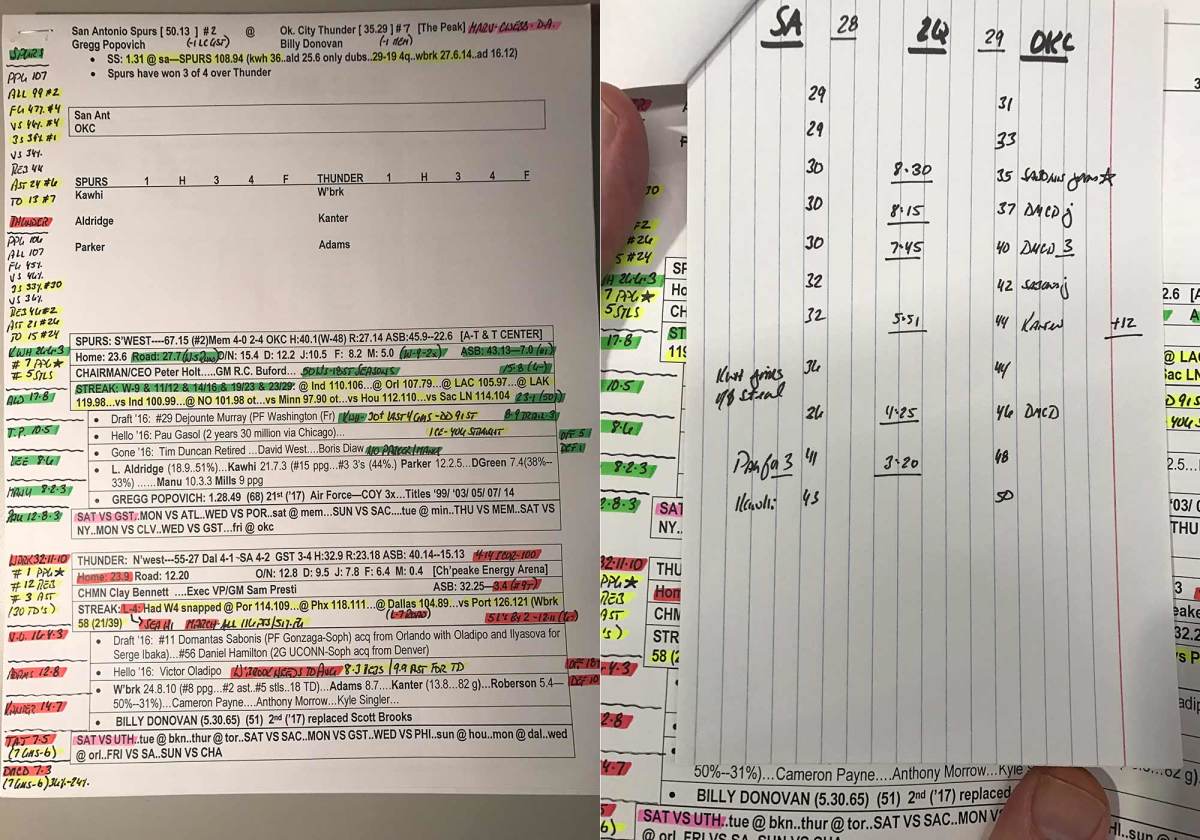
Clearly, there are websites and research assistants that could handle this grunt work. But the 60-year-old Johnson said digging into the manual data entry helps him track trends, formulate possible discussion topics, and understand when he will need to set the record straight. There’s another practical benefit: the act of writing down the information helps Johnson commit it to memory.
More than anything, Johnson finds that his routine, which pre-dates the personal computer era, puts him at ease and keeps him honest. “Ninety percent of this stuff is not going to make the air,” Johnson said, in a vast understatement. “This is probably overkill but I’ve been doing overkill like this for 28 years. This gives me a comfort factor. I can’t take a day off. If I ever don’t want to do the prep, I’ll just get out.”
Johnson’s commitment to his process has inspired both awe and potential pranks. Kiely said that Johnson works “like someone who thinks he might lose his job,” adding that he regretted the time—the only time—he messed up Johnson’s highlighters, drawing genuine venom from the mild-mannered host. Barkley once made the mistake of tearing up Johnson’s notes on a dare from Smith, only to be frozen out for the rest of the show like Michael Jordan during the 1985 All-Star Game. “I was pissed,” Johnson said. “I told Charles if he ever did something like that again I couldn’t be held responsible for what I would do. I was ready to throw coffee on him.”
The fruits of Johnson’s labors were on display the same night Barkley received his spa treatment. As Barkley gathered himself to return to the set, Johnson emerged from his office, where he had been hand-scoring the first half like a newspaper beat reporter. The forthcoming halftime show featured heavy roasting of Barkley’s eyebrows and one of Johnson’s meticulously-crafted Westbrook triple-double factoids.
If Johnson’s nightly prep work sounds laborious, consider his mornings. When he’s not on the road anchoring Turner’s coverage, Johnson and Cheryl get their 28-year-old son Michael ready for the day. Michael, who was adopted from a Romanian orphanage in 1991, has muscular dystrophy and lives on a ventilator. The Johnsons, determined to have Michael remain at home where he is happier and more comfortable, employ a night nurse from 10 p.m. to 10 a.m.
In the morning, Johnson showers and shaves his son, assists him on and off the toilet, dresses him, and helps transport him from his bed into his wheelchair. The entire process takes up to 90 minutes. “He’s a miracle,” Johnson said, noting that Cheryl made the decision to adopt him when a nurse told her “No good, don’t take” when she first met him in Romania. “Caring for him puts me in a servant mentality.”
Johnson’s other two adult children, Eric and Maggie, help care for Michael, whose encyclopedic knowledge of cars was featured in an ESPN E:60 profile. “He knows more about cars than I do,” O’Neal confirmed, “and I own 50 cars.” Although he defied medical predictions by talking, walking and living into his 20s, Michael’s throat muscles are no longer strong enough to chew solid food, so his meals are blended up in a Vitamix and he drinks cans of Ensure through his feeding tube.
The Johnsons have focused on finding simple ways to brighten his day: cranking his favorite music, taking him outside on the patio to enjoy the sun, and giving him car books to read. Johnson and his son have even turned the suctioning of Michael’s lungs—to clear out life-threatening congestion—into something of a game, celebrating the removal of “big ole phlegmy, nasty things” with high fives.
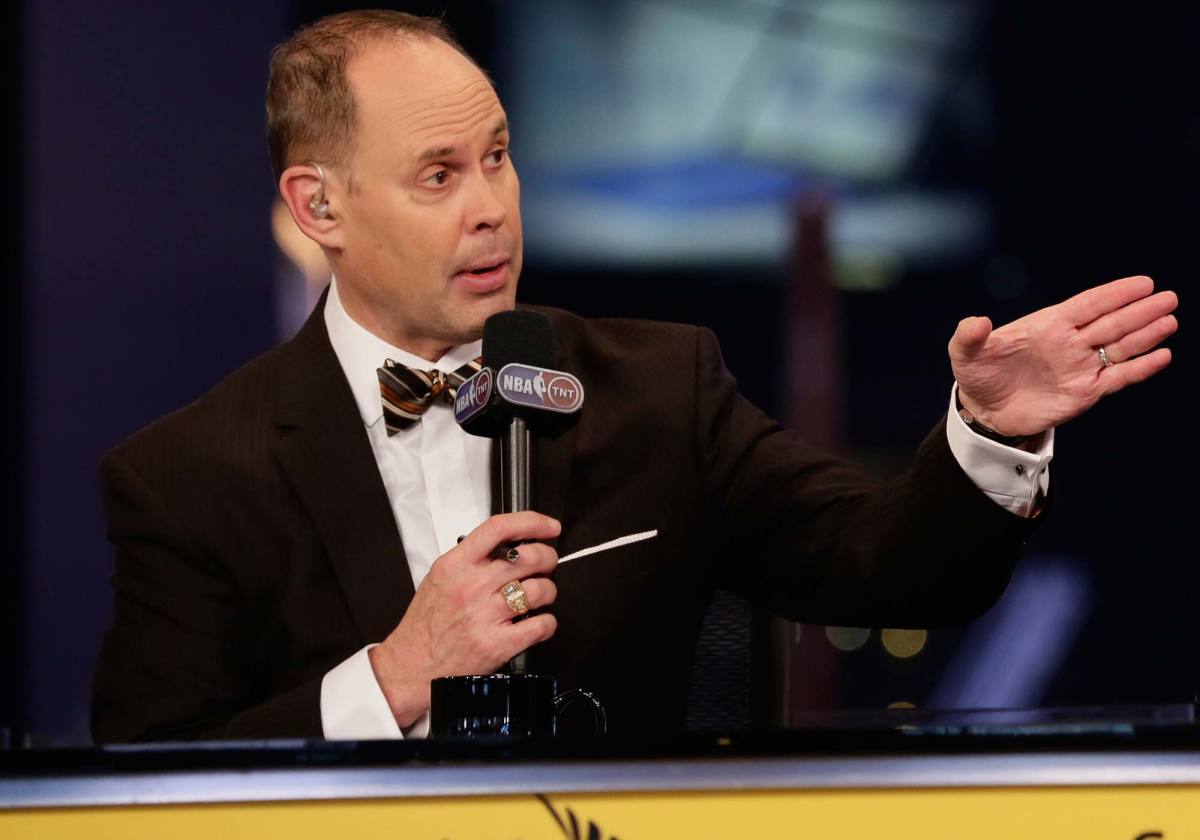
One recent compromise nearly moved Johnson to tears. “Michael loves going to Chick-Fil-A, but he can’t swallow the food anymore,” he said. “Now Eric takes him there and orders Michael a lemonade and some French fries. Eric dips the fries in ketchup and holds them in Michael’s mouth, so he gets the taste of the fry and the ketchup. Michael’s not chewing or swallowing, but at least he’s getting the taste. You do whatever you’ve got to do.”
On Dec. 23, 2016, Cheryl awoke to find Michael unresponsive, with his eyes rolled back in his head and with his body temperature and oxygen level way below normal. Earlier that week, Michael had been hospitalized in the Intensive Care Unit for pneumonia, a disease that can be fatal for someone in his condition. Johnson recalled stepping in for the night nurse, noticing that Michael’s machine was set incorrectly. “I got it at the right setting, I pounded on his chest and his back, turning up the oxygen, suctioning him like crazy, unhooking the ventilator, unhooking the bag,” Johnson said, his voice slowly growing more frantic as he worked through the steps. “After 45 minutes, Michael finally opened his eyes. He looked around a little bit. His numbers started going up. By that afternoon, he was Michael again. That morning rocked us pretty good. We thought that was it.”
Johnson remembered exchanging a glance with Cheryl that December morning, as they both realized that they had just endured a possible preview of their son’s death. “We know how this is going to end,” he said. “We don’t know when. That’s why we treasure Michael every day.”
Back at TNT, Johnson hardly mentions his family life, preferring to treat his work as an “escape.” Inside’s cast has friendly relationships with Johnson’s children and Eric used to work at Turner, but many of the show’s staffers, including his fellow panelists, didn’t realize the extent of Michael’s condition and his care routine until the ESPN E:60 piece aired in 2015.
Johnson’s producers view him as an extraordinary compartmentalizer who, in “Never rub” form, does his best to moderate his emotions. “You rarely see Ernie super high or super low,” said producer Jeremy Levin, who joined Turner in 2001 and has worked with Johnson for seven years. “Every once in a while, you can feel something might be going on. Sometimes he just says everything is cool and sometimes he might say that Michael had a tough night.” Kiely started wiping tears from his eyes and called himself as a “sentimental old fart” as soon as Johnson’s name is mentioned. “Ernie chose to take this on,” said Kiely, comparing Johnson’s “total self-sacrifice” to Pat Tillman’s decision to enlist in the Army during his NFL career. “I don’t know how he balances it.”
Kiely’s sentimentality is influenced by his proximity to Johnson during the host’s cancer battle. In Johnson’s new autobiography, Unscripted, which was released by Baker Publishing this week, he described being in denial when he found a bump on his neck in 2003 and putting off a visit to the doctor for months. Eventually, Johnson was diagnosed with follicular non-Hodgkin’s lymphoma, but he didn’t go public with the news until 2006, when viewers noticed a growth on his face and doctors recommended he begin chemotherapy. In the roughly three years between Johnson’s first testing phase and his treatment, he feared for his life and did his best to keep his focus despite many sleepless nights. “You think about missing weddings and graduations,” he said. “I knew I would need treatment but I was just kind of living with those thoughts. Not a day went by that I didn’t think about it. At the beginning, I thought I was going to die.”
Craig Sager: Always on the bright side
Johnson met individually with Barkley and Smith to share the news and lay out his treatment plan, which included the goal of returning to work for the start of the 2006-07 season, and he met with Kiely before taping a pre-game segment announcing his diagnosis. “The control room was in tears,” Kiely recalled. “Charles and Kenny saw it on tape and sprinted to him. I just wanted him to announce it on his terms. He was very private and very brave.”
Smith remembered being stunned by Johnson’s initial revelation because the growth was less visible in person than it was on television. Barkley was struck by Johnson’s refusal to dwell: “Typical Ernie. He said, ‘This is what’s happening. Let’s move on.’ He never makes it about himself.” To this day, Johnson remains bothered by viewers who mocked the growth and second-guessed his treatment timetable, and he said that he gets “uncomfortable” when he re-watches clips from that era. “I didn’t want to be the sympathy guy,” Johnson said, remembering how he made Barkley and Smith promise they wouldn’t lay off him.
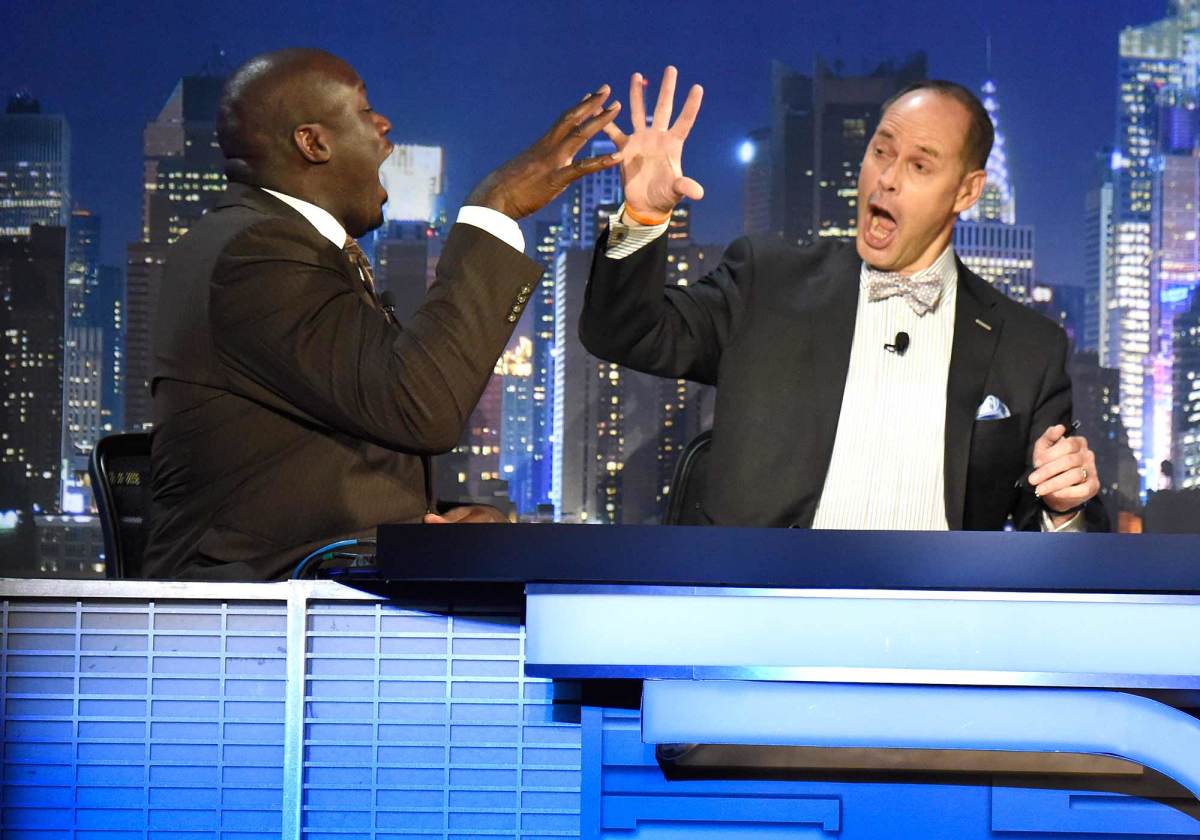
Although Johnson returned to work on schedule and has remained in remission ever since, the disease isn’t behind him. He refuses to say he “beat cancer,” instead preferring the term “survivor.” He went through so many chemo sessions that he could predict his energy levels based on how many days had passed since his most recent round, so he’s glad to make phone calls to others fighting through the disease, including Smith’s father. Every year at All-Star, he makes a point to swap tales with young patients at the NBA’s “Make a Wish” events.
Even if Johnson had wanted to choose the opposite approach, to bury the memories deep and never look back, circumstances at TNT wouldn’t have allowed it. In 2014, popular sideline reporter Craig Sager was diagnosed with leukemia, forcing Johnson to confront his own history as he supported his colleague. The NBA and TNT went all out to honor Sager, designing special shirts and holding other events to raise money and awareness. Johnson and TNT’s talent wore wacky clothes to salute Sage, a tribute that quickly caught on.
Sager’s diagnosis led Johnson to think back to receiving his diagnosis and the painful process of passing the bad news on to his family. It also caused him to remember a letter he received from a viewer in New York, who told him that he “looked really great” compared to his two friends who were diagnosed with non-Hodgkin’s lymphoma and later died. The comparison shook him. “No matter if it’s Craig Sager or a total stranger, we’re all in the same club,” he said. “We express our support for each other with a wink or a clenched fist. Every time I come in contact with someone who has been diagnosed, I ask how I can help.”
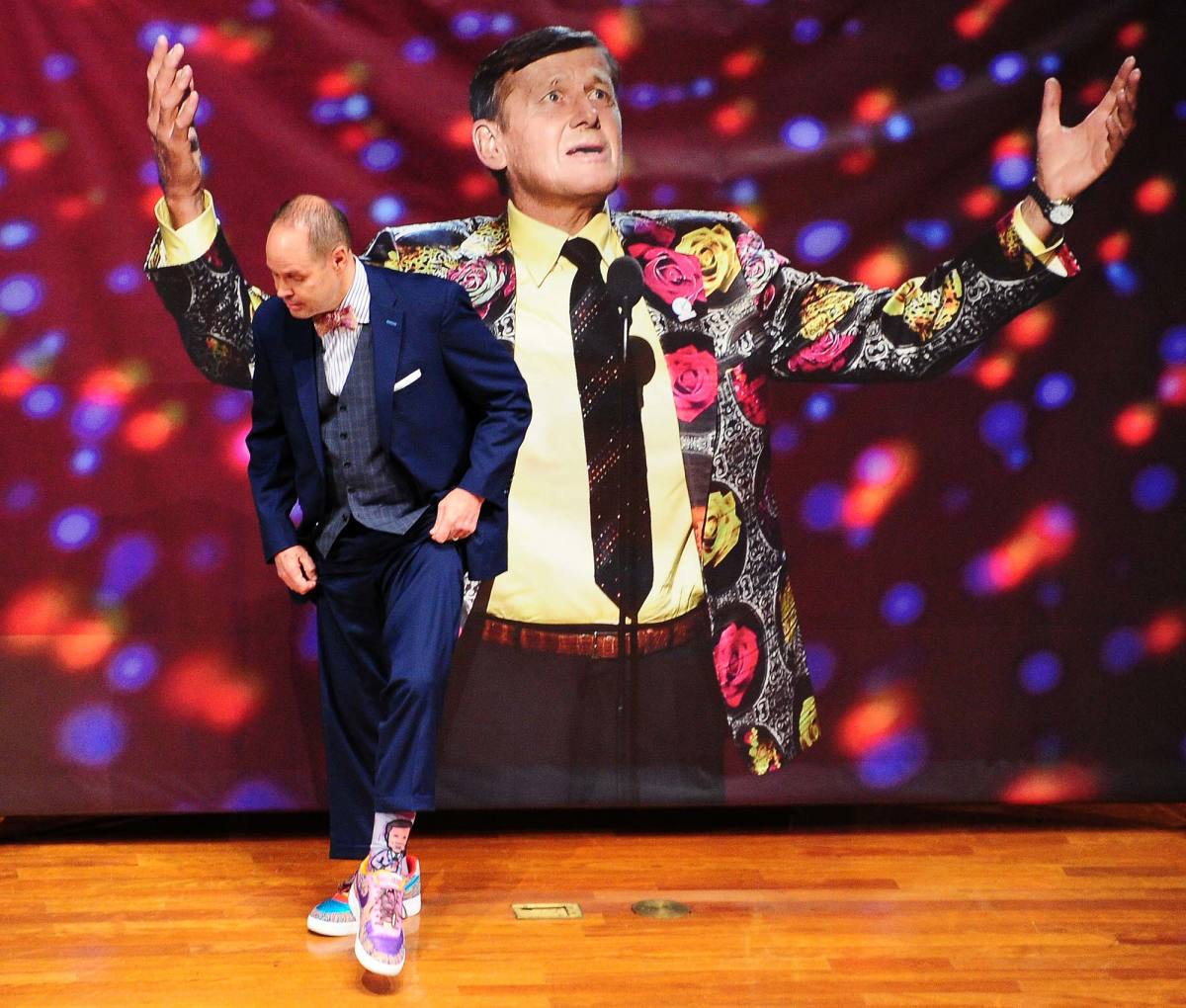
On Johnson’s first visit to see Sager in the hospital, he passed on advice he had received from another survivor: You may have cancer but cancer doesn’t have you. “Every time we stopped by, he was so fired up,” Johnson said. “He had that unbelievable fight. Sags fought cancer and it never defined him.” After Sager’s death in December 2016, Johnson delivered a remembrance poem at the memorial service. Just three days later, the Johnsons woke up fearing that Michael had died in his sleep. Throughout this trying stretch, Johnson continued to host Inside, and he plunged forward with Turner’s coverage of the NCAA tournament in March.
Looking back on all of it, from 2003 to the present, Johnson pointed to Kobe Bryant’s words of support as a symbol for how he copes with the knowledge that non-Hodgkin’s lymphoma is not curable, only treatable. In Oct. 2006, TNT surprised Johnson with a video message from the Lakers star, who told Johnson that he “was officially a brother now” because he was bald. “He was the biggest guy in the game at the time,” Johnson said, smiling. “It was the way it was said, the timing. It was just funny. Laughter is awesome. Going through what I went through, I was begging for days where I felt like laughing.”
If Barkley had his way, Johnson would let loose more often. Johnson, understandably, views his role differently, calling himself “a rogue traffic cop trying to get someone broadsided or rear-ended.” Decades after the fact, he recalled his first impressions of his three stage mates, and he regularly lapsed into deep-voiced impressions of Barkley and O’Neal. More than anything, Johnson delighted in running down his cast’s strengths: Barkley’s landscape-changing brashness, Smith’s nit-picking counterpunches, and O’Neal’s devotion to self-deprecation. “There’s no way to predict chemistry,” he said, sounding like a coach who knows his team has it.
However, Johnson was at the center of a storm last November when he told viewers, shortly after the 2016 presidential election, that he wrote in John Kasich and said that he was “praying for Donald Trump.” Although Keith Olbermann and other critics accusing him of being “naïve,” religious leaders and Seahawks coach Pete Carroll reached out to him to express their support for his optimism. One clip of Johnson’s comments has received more than 82,000 retweets, and the segment set records for Turner’s social engagement.
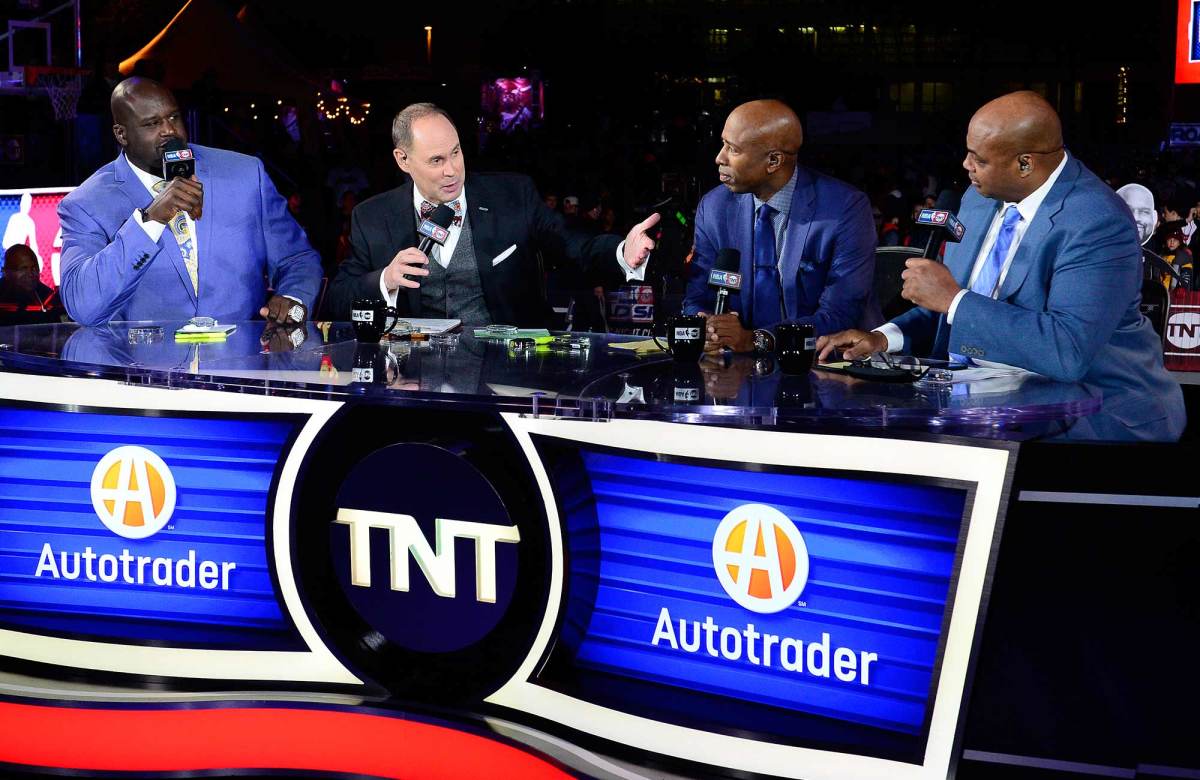
In the months since, the Trump administration has tried to repeal the Affordable Care Act and attempted to a travel ban. Considering his personal story—his health, his son’s health and the fact two of his children were adopted from overseas—one can’t help but wonder whether Johnson regrets his Election Day decision.
He doesn’t. Johnson wished Trump’s Twitter posts didn’t dominate the national discourse, and he said he would adopt a Syrian refugee “in a heartbeat” if he was younger. Still, he wasn’t budging from his write-in vote, which was driven by his “unhappiness” with Trump and Hillary Clinton.
NBA Mock Draft 3.0: Tourney Shakes Up Board
“The only way I can come to grips with this election result is through the lens of faith,” Johnson said. “Am I still hopeful? There wouldn’t be much hope if I gave it 40 days and then said I was wrong. I’ll always pray that the president surrounds himself with the right people and that there’s a chance he will turn. You may hate the pilot but you don’t want the plane to crash.”
Like any team that’s had a good run—or any office that has dealt so directly with mortality—the Inside crew knows that it won’t last forever. Barkley put it most succinctly: “At some point, you’re going to be too old to have fun.” Smith views the crew as the Four Musketeers: “If you take one guy off the Dream Team, it really isn’t the Dream Team any more. When one guy retires, it’s over.” O’Neal, the newcomer, was more concerned with perfecting his craft rather than speculating about the future. “The toughest part of TV is not repeating yourself,” he said. “Barkley has been saying the same thing for the last six years. Like, ‘Chris Paul is the greatest leader in the NBA.’”
There is a segment of viewers who agree with O’Neal’s quip, that Inside leans too heavily on previously-used material and that Barkley and O’Neal hammer too regularly on familiar punching bags. Over the last few months, LeBron James has called Barkley a “hater” and Kevin Durant has questioned O’Neal’s reliance on championships as a means of personal validation. Inside’s defenders would point out that Barkley and O’Neal have been so successful at their jobs—sparking discussion—that even the NBA’s brightest stars can’t resist responding. And there’s no question the show has succeeded in incorporating social media, allowing viewers the opportunity to take their shots on a national stage.
Johnson, for his part, has begun envisioning what retirement will look like: traveling with Cheryl, checking off the Northern Lights from his bucket list, and delving into his love of photography. But the thoughts don’t linger. Indeed, he recently signed a new contract that will carry him well into his 60s. He believes the deal will be his last and intends on completing it before becoming a full-time grandfather.
For now, Inside’s traditions and rituals are too much fun to walk away from. There’s Smith, spinning around to ABBA’s “Dancing Queen” as he enters the set. There’s Barkley, uttering an exasperated “Come on, man” before letting loose on something that’s been bothering him all day. There’s O’Neal laughing his way through JaVale McGee bloopers, no matter how many times the Warriors complain.
And then there’s Johnson, who still tugs on his shirt sleeve to say hello to his family and still digs into the latest batch of box scores once everyone is asleep. At last check, the host’s highlighters were lined up neatly and his three-ring binder was fully up to date.
